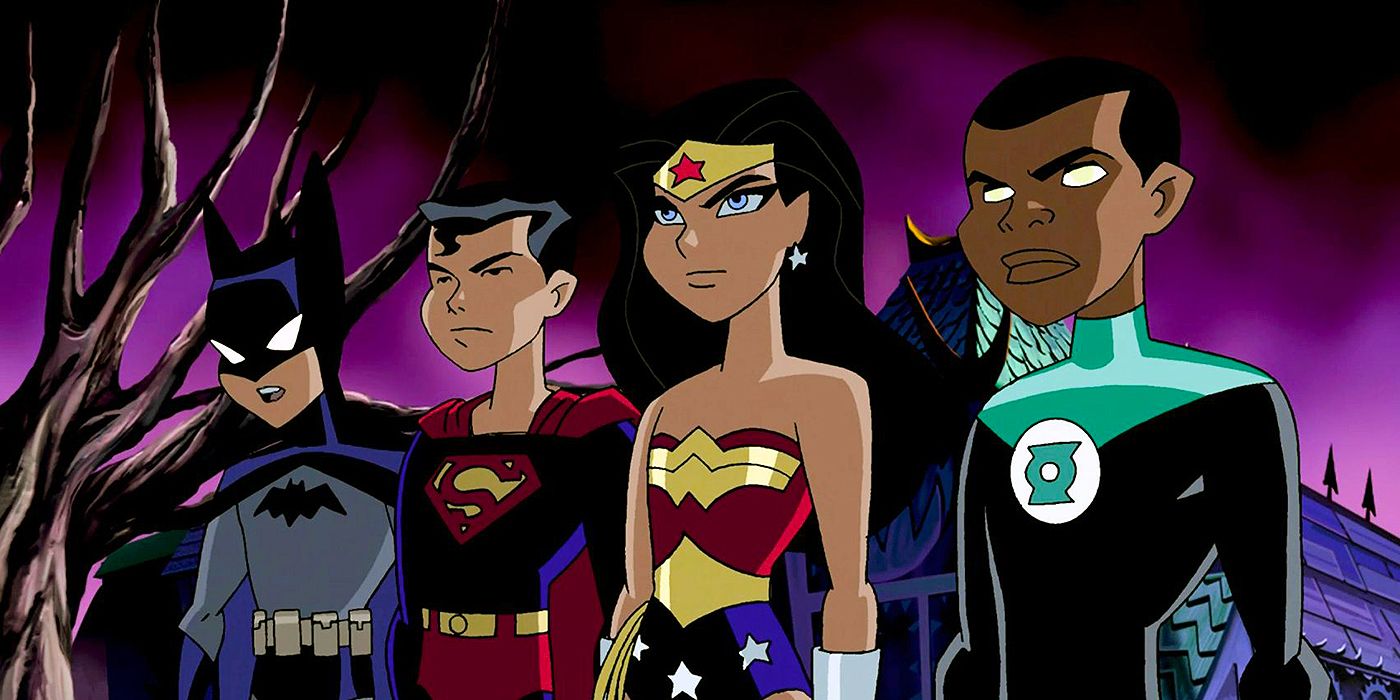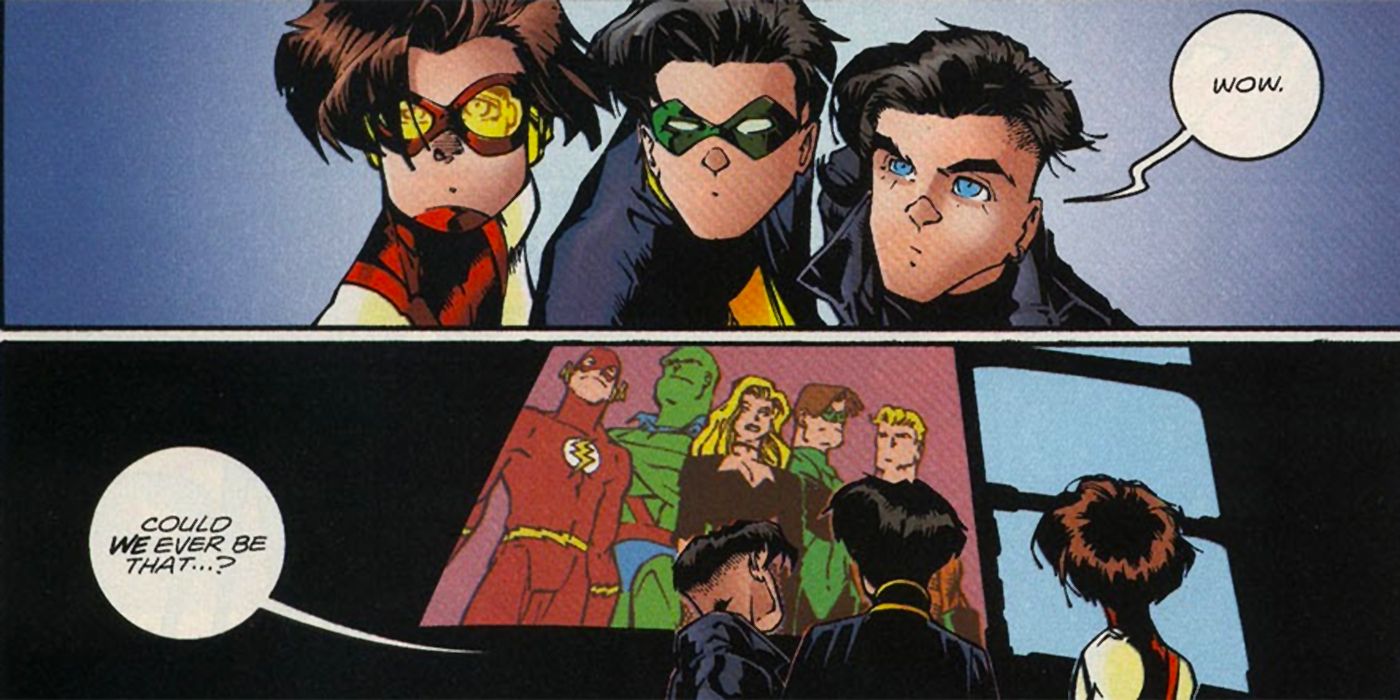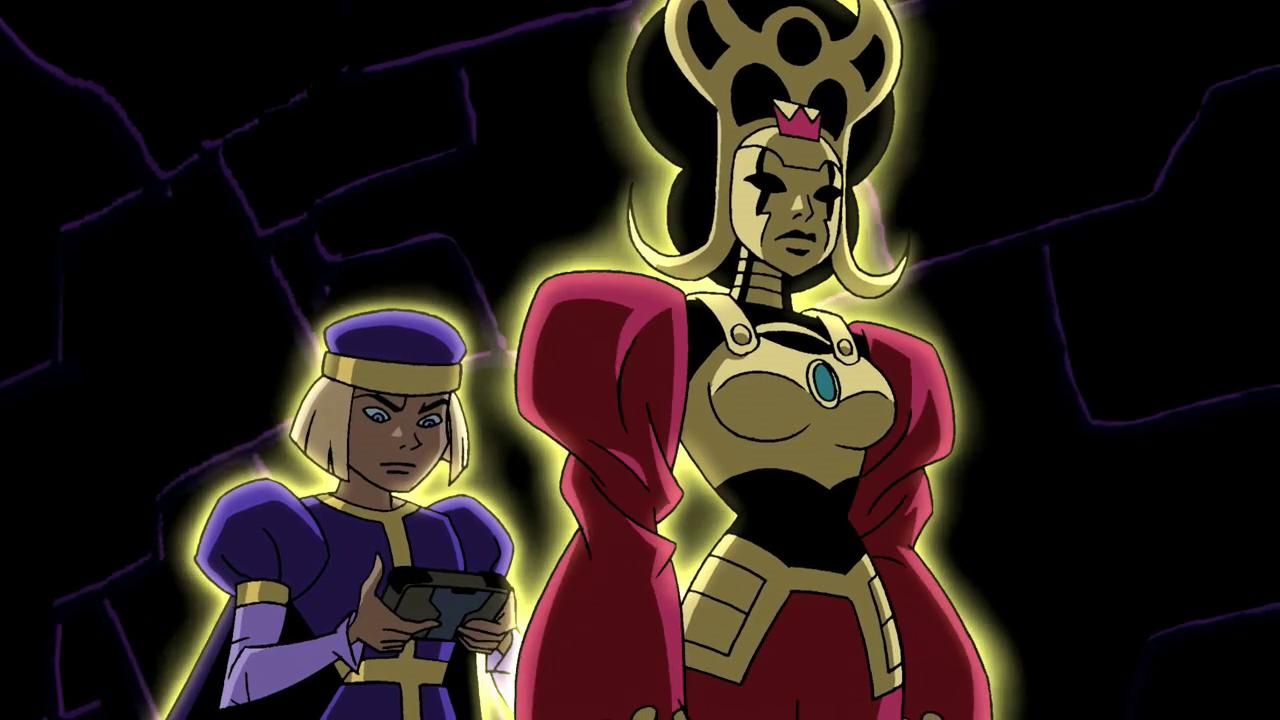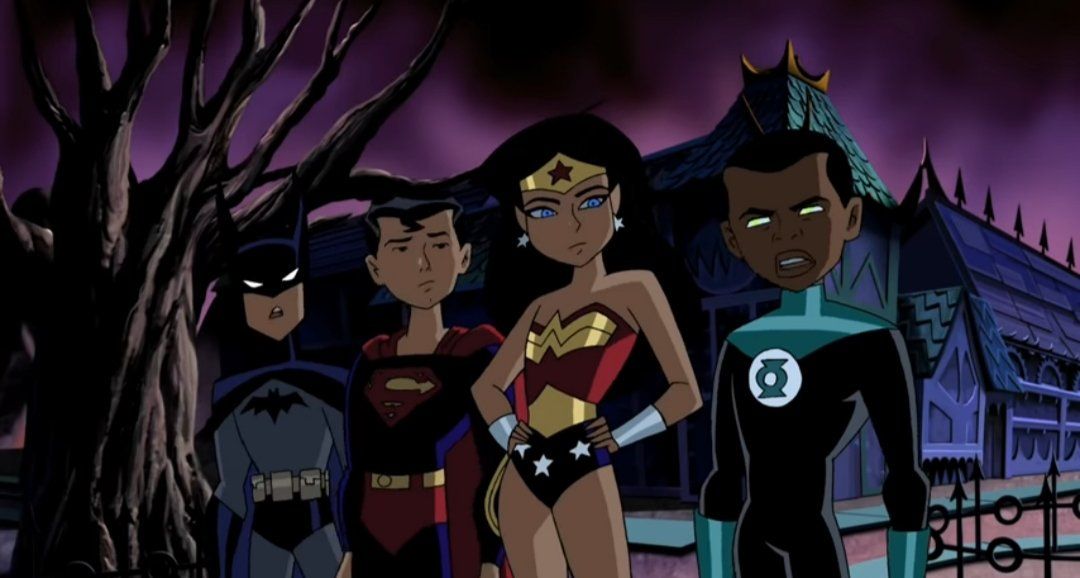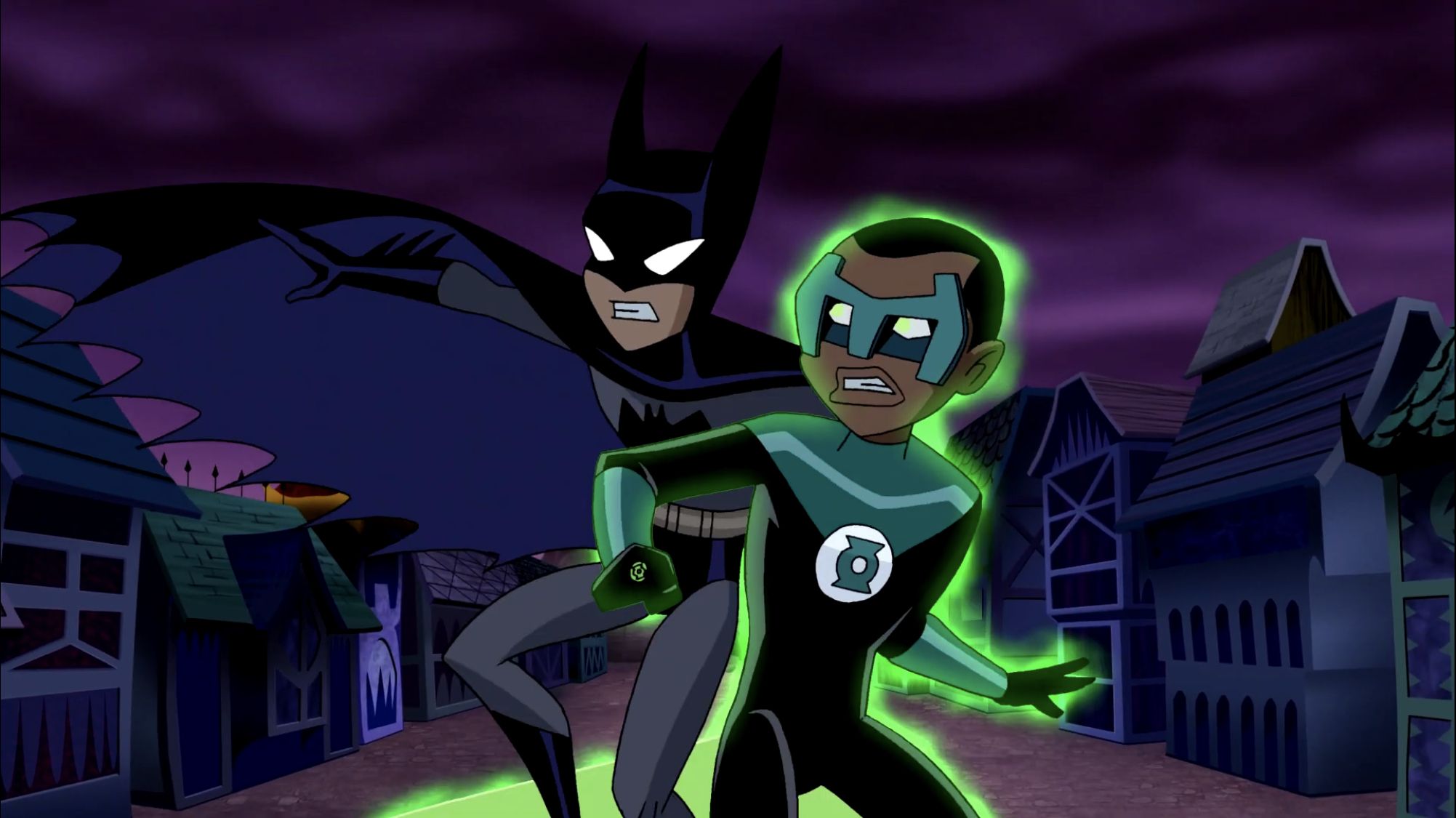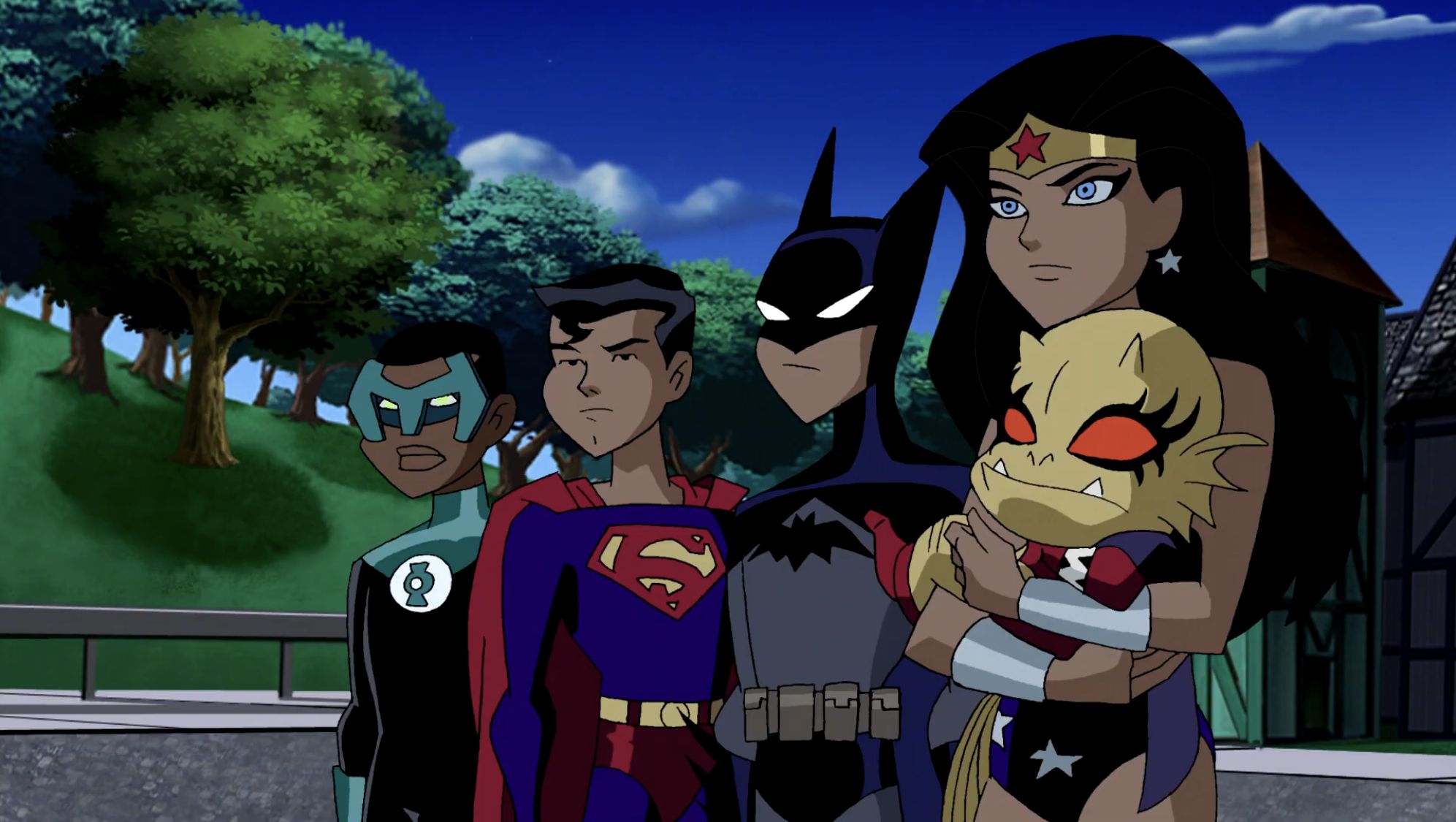Welcome to Adventure(s) Time's 146th installment, a look at animated heroes of the past. This week, the topic is the comics inspirations for one of Justice League Unlimited's more memorable (and surprisingly disturbing) episodes. And if you have any suggestions for the future, let me hear them. Just contact me on Twitter.
With a revamped line-up of dozens of established DC superheroes, and a remit to produce done-in-one stories, Justice League Unlimited often draw inspiration from established comics material. The most famous was the animated series' adaptation of Alan Moore and Dave Gibbons' classic "For The Man Who Has Everything." Less prestigious is another inspiration for an episode, the 1998 limited series JLA: World Without Grown-Ups.
How JLA: World Without Grown-Ups Inspired Justice League Unlimited's 'Kid Stuff'
In the late 1990s, DC's Justice League experienced renewed popularity following Grant Morrison and Howard Porter's revamp of the monthly comic, based on the premise that the title deserved big-name heroes and appropriately big ideas. DC wasn't shy about exploiting the Justice League brand, producing countless miniseries, one-shots and prestige-format titles with the team. World Without Grown-Ups was a two-part prestige series that would also set the stage for a Justice League spinoff titled Young Justice.
The comic was written by Todd Dezago, with penciling duties split between Mike McKone and Humberto Ramos. McKone was assigned the pages dealing with the adult heroes, featuring them in the ultra-buff, heavily rendered style of that era's typical mainstream superhero comic. Ramos utilized his manga-inspired, expressionistic style on the pages devoted to the heroes' teen sidekicks, dramatizing the generational rift between the heroes, and a concurrent shift in how these characters were portrayed.
In World Without Grown-Ups, a boy named Matthew Stuart pitches a fit on his 13th birthday when his father, an Indiana Jones-style explorer, gives him an ancient Atlantean artifact instead of a video game system. He soon learns, however, that the artifact grants him the power of a god. Stuart transforms into the powerful Bedlam, and immediately transports every adult to a parallel world. As Earth is now only populated by children, Robin, Superboy and Impulse team up to try to set the world right.
The story became the inspiration for a later Justice League Unlimited episode, "Kid Stuff" (alternately referred to as "Kids Stuff" or "Kids' Stuff" on the DVD packaging and online listings). The story was written by established DC Animated Universe writer Henry Gilroy, and directed by one of Unlimited's best, Joaquim Dos Santos.
How Justice League Unlimited's 'Kid Stuff' Changed the Story
Rather than using a new character as the story's starting point, the creators bring back established villains Morgaine Le Fay and her son, Mordred, make return appearances.
In an unnamed mountain temple, the villains locate a mystic artifact, the Amulet of First Magic. Mordred snatches the amulet from his mother, declaring he is tired of living in her shadow. She warns he's not mature enough to use the amulet's power, which angers Mordred (while also proving her point). He responds by casting a spell to banish every adult from the world. Elsewhere, the Justice League are fighting Cheetah, Copperhead, Blockbuster and KGBeast when the energy wave hits. They immediately find themselves in a strange dimension populated only by adults.
The comic's story relies on teen sidekicks to save the day, in an adventure in which they turn to Captain Marvel's alter-ego, Billy Batson, for help. That raises an intriguing question: In a world without adults, can the kid Billy Batson turn into the magical adult being, Captain Marvel? It's a subject the animated adaptation avoids entirely; in fact, all teen sidekicks are ignored. Instead, the cartoon uses the setup to have the four Justice League members seen in the opening make a deal with Morgaine Le Fay and return to Earth as children.
How 'Kid Stuff' Further Explored the Justice League Heroes
That seems silly, but the episode has a surprising amount of character work, and a dark ending that's difficult to forget. There's an impressive pedigree of kid actors portraying the Justice League. Marc John Jefferies, the young Green Lantern, played the title role in the Halle Berry film Losing Isiah, and later portrayed rapper Lil' Cease in the Notorious bio-film, and Darius on HBO's Treme. The young Batman, Shane Haboucha, was the boy obsessed with Stacy's Mom in the classic Fountains of Wayne music video. And young Wonder Woman was voiced by acclaimed actress Dakota Fanning.
The heroes selected for this episode are Superman, Batman, Wonder Woman and Green Lantern, four characters with well-established personalities in this continuity. They seem to have maintained their adult intelligence inside their child bodies, while remaining stuck at a child's level of maturity.
Batman's demeanor is pouty, Wonder Woman is naively optimistic, Green Lantern is free to explore a child's imagination with his power ring, and Superman is forced to play the role of the big brother. The producers were still flirting with the idea of making Batman and Wonder Woman a couple, and recasting them as children enables the characters to interact without the nuances of adult discourse. Wonder Woman openly crushes on Batman, and the emotionally immature Batman can only push her away. When Superman questions what's going on with them, an exasperated Green Lantern responds, "Man, for somebody with, like, 50 different kinds of vision, you are so blind."
'Kid Stuff' Gives John Stewart the Spotlight - and Mordred a Grim Fate
Green Lantern possibly has the episode's best moments, as his normally stoic portrayal gives way to a kid's enthusiasm. A longstanding fan complaint that John Stewart was only using his power ring to create generic energy blasts is addressed by having Kid John adopt everything from Silver Age-inspired gigantic boxing gloves to a rocket-launching mecha-robot. There's a running bit that John has so many ideas for what to do with his ring, he can't focus on just one. That's a clear contrast to his normal portrayal, and an indication that the discipline he learned as a Marine has given him a cold focus in battle. One that, unfortunately, has also robbed him of his youthful imagination.
The ultimate resolution might seem as campy as the episode's premise: The heroes taunt Mordred that he's afraid to grow up, which in turn goads him into transforming into an adult. That, of course, violates the rules he created for reality, and breaks his spell. The final moments reveal, however, that Mordred still has eternal life, but no longer eternal youth. He exists now as an impossibly old man, requiring constant care from his mother; a cruel fate for anyone, but especially an arrogant man desperate to escape his mother's influence.
Episodes Like Justice League Unlimited's 'Kid Stuff' Are a Thing of the Past
The child designs of the Justice League heroes look great, staying true to Bruce Timm's style without coming across as too ridiculous. Cartoon Network later aired animated series like The Super Hero Squad Show, which featured Marvel heroes in a vaguely child-like, super-deformed style, but lacking much of the charm seen here.
Unfortunately, the animation industry has evolved so that the designs literally portray the heroes as kids, or the world they inhabit must to be ridiculous and kid-friendly. Any material aimed at a viewer older than age 8 is relegated to the direct-to-video features or streaming shows, which regularly veer into R-rated material. No happy medium exists any longer, and both audiences are ill-served.
Timm has commented that the more humorous episodes of Unlimited -- "Kid Stuff," "This Little Piggy" and "The Greatest Story Never Told" -- were intended to be spread out, but production issues led to them airing within a few weeks of each other. The implication is that the audience will only accept so much of this material, and that the lighter fare should be sprinkled among the serious, important episodes. Perhaps so, but Justice League Unlimited earned enormous goodwill with its audience early on. The fans know these episodes aren't intended to make the heroes look foolish, and they're honestly clever enough to stand on their own, with memorable character moments and surprising endings.

